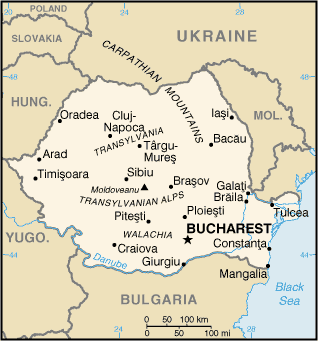A region shrouded in mystery and occupied by numerous ethnic groups,
Transylvania is one of Europe's least visited tourist destinations.
Originally settled by ethnic Germans invited by a Hungarian King, the
region became the home of Hungarians, Gypsies and Romanians.
Siebenburgen, the German name, represents the seven fortress town founded
by the Germans after they began to settle the area in 1049.
Once a prosperous agricultural and trading region, the breakup of the
Austro-Hungarian Empire at the close of World War I began a long decline.
Things worsened dramatically after the Germans lost the Second World War
when thousands of ethnic Germans were deported to the Urals as slave
laborers. Decades of communist neglect exacerbated Transylvania's
demise. The nightmare reached its apex under Ceausescu's
systemization plan in the 1980s. This grand scheme to
collectivize agriculture forced small farmers off their land. This
disastrous policy resulted in the destruction of over 7,000 of Romania's
13,000 plus rural villages, many of them in Transylvania.
Today Transylvania remains
an improvised, backward underdeveloped region. Decades of ethnic
persecution officially ended after the Christmas Revolution in 1989.
Despite the end of official discrimination, the vast majority of ethnic
Germans emigrated after 1989. Brutal ethnic clashes between Hungarians
and Romanians in the early 1990s did little to convince the Germans to stay.
Roma (Gypsies) have occupied many of the home and farms left behind by the
Germans when they left for better opportunities elsewhere.


